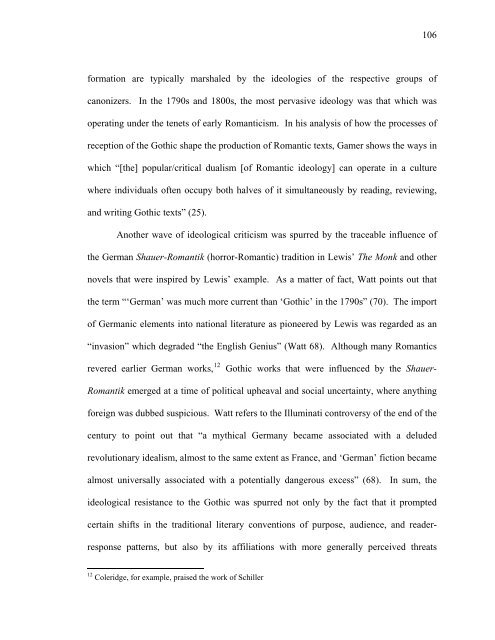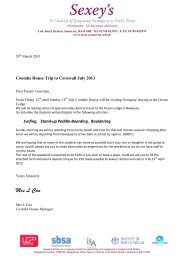Untitled - Sexey's School Moodle
Untitled - Sexey's School Moodle
Untitled - Sexey's School Moodle
Create successful ePaper yourself
Turn your PDF publications into a flip-book with our unique Google optimized e-Paper software.
formation are typically marshaled by the ideologies of the respective groups of<br />
canonizers. In the 1790s and 1800s, the most pervasive ideology was that which was<br />
operating under the tenets of early Romanticism. In his analysis of how the processes of<br />
reception of the Gothic shape the production of Romantic texts, Gamer shows the ways in<br />
which “[the] popular/critical dualism [of Romantic ideology] can operate in a culture<br />
where individuals often occupy both halves of it simultaneously by reading, reviewing,<br />
and writing Gothic texts” (25).<br />
106<br />
Another wave of ideological criticism was spurred by the traceable influence of<br />
the German Shauer-Romantik (horror-Romantic) tradition in Lewis’ The Monk and other<br />
novels that were inspired by Lewis’ example. As a matter of fact, Watt points out that<br />
the term “‘German’ was much more current than ‘Gothic’ in the 1790s” (70). The import<br />
of Germanic elements into national literature as pioneered by Lewis was regarded as an<br />
“invasion” which degraded “the English Genius” (Watt 68). Although many Romantics<br />
revered earlier German works, 12 Gothic works that were influenced by the Shauer-<br />
Romantik emerged at a time of political upheaval and social uncertainty, where anything<br />
foreign was dubbed suspicious. Watt refers to the Illuminati controversy of the end of the<br />
century to point out that “a mythical Germany became associated with a deluded<br />
revolutionary idealism, almost to the same extent as France, and ‘German’ fiction became<br />
almost universally associated with a potentially dangerous excess” (68). In sum, the<br />
ideological resistance to the Gothic was spurred not only by the fact that it prompted<br />
certain shifts in the traditional literary conventions of purpose, audience, and reader-<br />
response patterns, but also by its affiliations with more generally perceived threats<br />
12 Coleridge, for example, praised the work of Schiller



